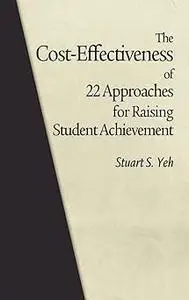Stuart S Yeh, "The Cost-Effectiveness of 22 Approaches for Raising Student Achievement "
English | ISBN: 1617354031 | 2011 | 246 pages | PDF | 2 MB
English | ISBN: 1617354031 | 2011 | 246 pages | PDF | 2 MB
As a consequence of the federal "No Child Left Behind" (NCLB) law, there is tremendous pressure on school principals, teachers, school superintendents, district staff, state departments of education and governors to maximize the increase in student achievement that is obtained with every dollar of expenditure. Currently, teachers are forced to rely on extremely inefficient approaches that take enormous amounts of time, both during the school day and throughout the K-12 learning years. This is experienced in terms of the reduced time that is available to teach subjects other than math and reading, as schools resort to double periods of math, double periods of reading, and enormous amounts of remedial instruction that directly reduce the time available for other subjects including science, art, and music. In contrast, this book suggests that student achievement may be increased in a way that is not only cost-effective in dollar terms, but efficient in the sense that it does not rely on unusual investments in the time required to obtain results. The book draws upon a wealth of cost-effectiveness data to dispel common notions about "what works" in addressing the achievement gap: increased expenditure per pupil, charter schools, voucher programs, increased educational accountability, class size reduction, comprehensive school reform, increased teacher salaries, more selective teacher recruitment, the use of "value-added" methods to measure and reward teacher performance, the use of National Board teacher certification to identify high-performing teachers, and a host of other approaches.
Read more



